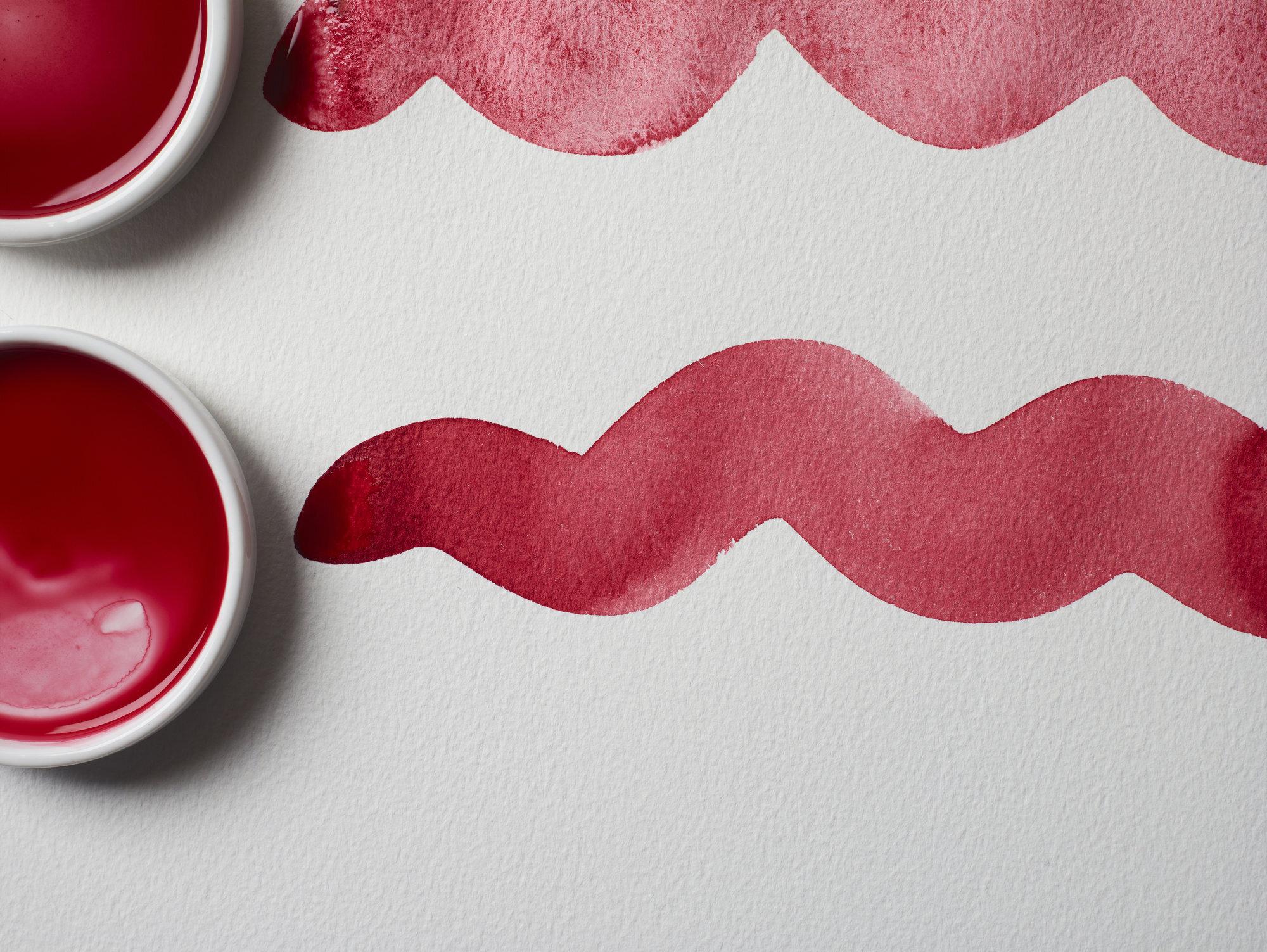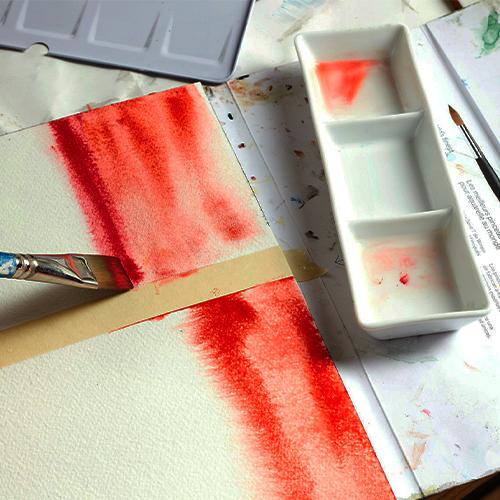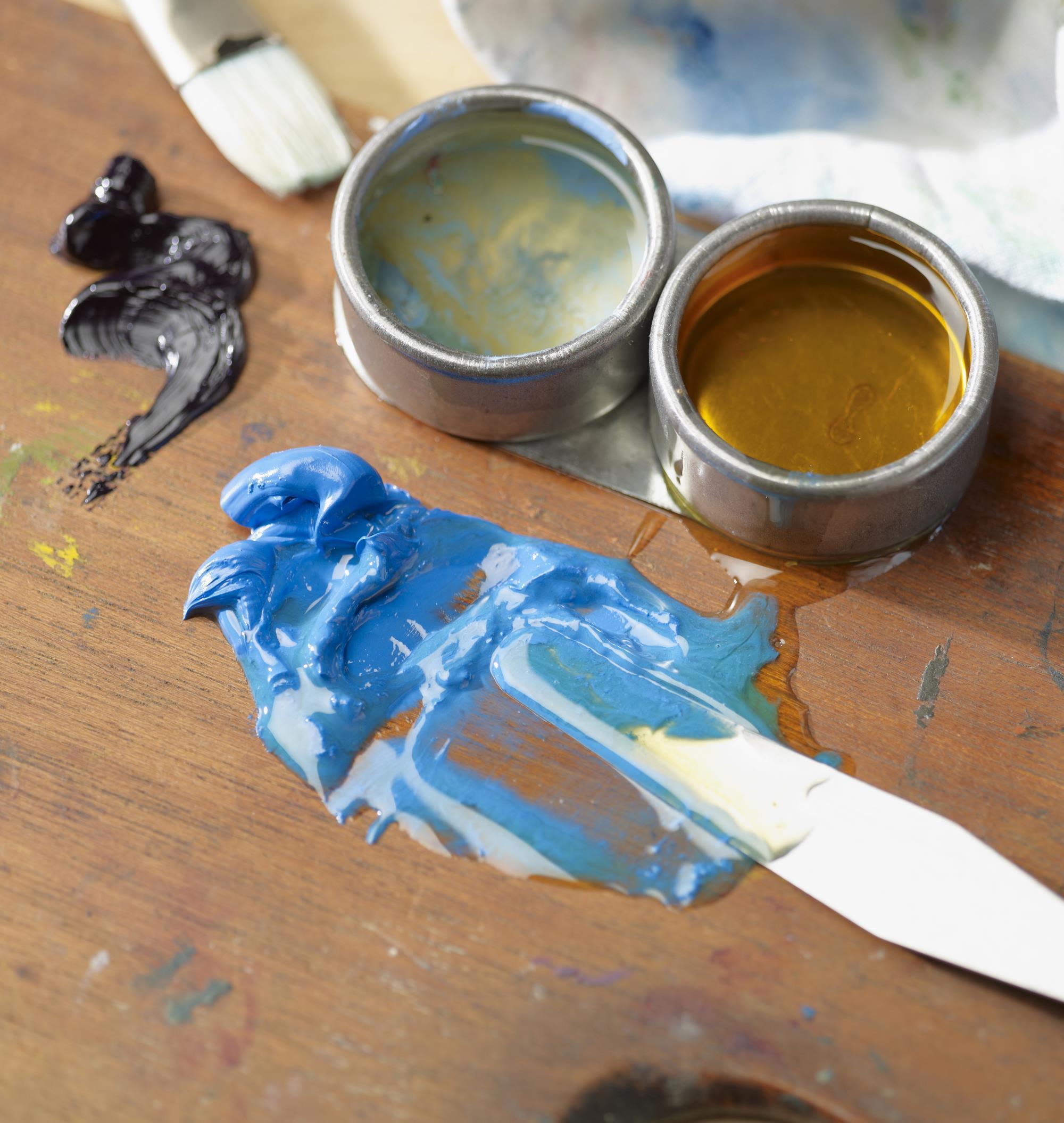
Oil painting mediums can be somewhat of a mystery and in a lot of cases quite intimidating. Oil painting is generally a precious process so sometimes the thought of an additive can be a tall order. What do they do? Do you use Linseed or Stand Oil? Cold Press or Refined? And what's the difference between them all? Here's our blog to answer all these questions!

Linseed oil, like all drying oils, has a chemical reaction with oxygen which causes it to polymerise, encasing the pigment and helping to maintain colour vibrancy for years. 2 of the most popular kinds of linseed oil are Cold Pressed and Refined.
Refined Linseed Oil
This is the most popular form of Linseed Oil. It slows down the drying time of the paint, and when painting in layers, this can be very useful.
Cold Press Linseed Oil is often used when grinding pigments, to create oil paint at a professional level. It dries more slowly than Refined Linseed Oil, taking up for four days, and has a shinier and harder finish.
Linseed oil is simple to use: mix a little into your oil paint on the palette and you’ll notice the texture, consistency, and colour shift straight away.
Experiment with different paint-to-oil ratios and let each swatch dry fully – this way you’ll see how the finish and intensity change before committing to a piece.
Tip: Instead of mixing on the palette, dip your brush lightly into the oil before picking up paint. This lets you work directly onto the canvas with a more fluid application.
Apply the ‘slow over fast rule’ – paint your fast-drying layers first, and then each layer on top should take longer to dry than the previous one. You can therefore apply more of this medium with each layer.
Less for Top Layers
On thicker, final layers, go easy on the linseed oil. Using too much medium here can slow drying and cause instability in the surface as it cures.
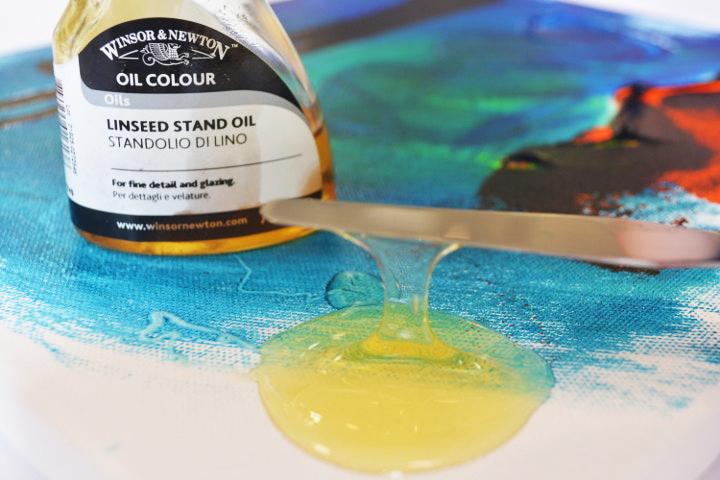
Linseed Stand Oil is thick with the consistency of honey. It’s extracted from the Linseed too, but is left to stand and thicken.
You can therefore use less of it because it’s more concentrated. It’s a translucent medium which makes it good for glazes, and it levels out your brush strokes to leave a glossy sheen.
You can mix it with Turpentine to make your own medium. A small quantity of Stand Oil mixed with Turpentine will make a slow-drying medium, one that will dry slightly quicker than when you use Linseed Oil on its own.
A traditional medium that brings a unique softness and body to oil paint. Beeswax Medium adds a satin-matt finish, reduces gloss, and gives colours a subtle translucency that’s perfect for layering. It also makes paint more malleable, holding brushmarks and creating a sense of depth that’s harder to achieve with oils alone.
Ways to use it:
- Mix directly with oil paint – blend small amounts on the palette to thicken colour, giving it a buttery texture that’s easy to control. It helps paint hold its shape and retains visible brush or knife marks.
- Soften sheen in layers – when added to oils or combined with solvent/mediums, beeswax reduces gloss and creates a satin surface, ideal for artists who prefer a subtler finish.
- Combine with damar or natural resins – for artists looking to explore traditional techniques, beeswax can be part of a recipe for encaustic-style painting, giving surfaces a distinctive depth.
- Build texture and depth – use with a palette knife to layer and sculpt paint, knowing the wax will keep impasto passages stable and prevent sagging over time.
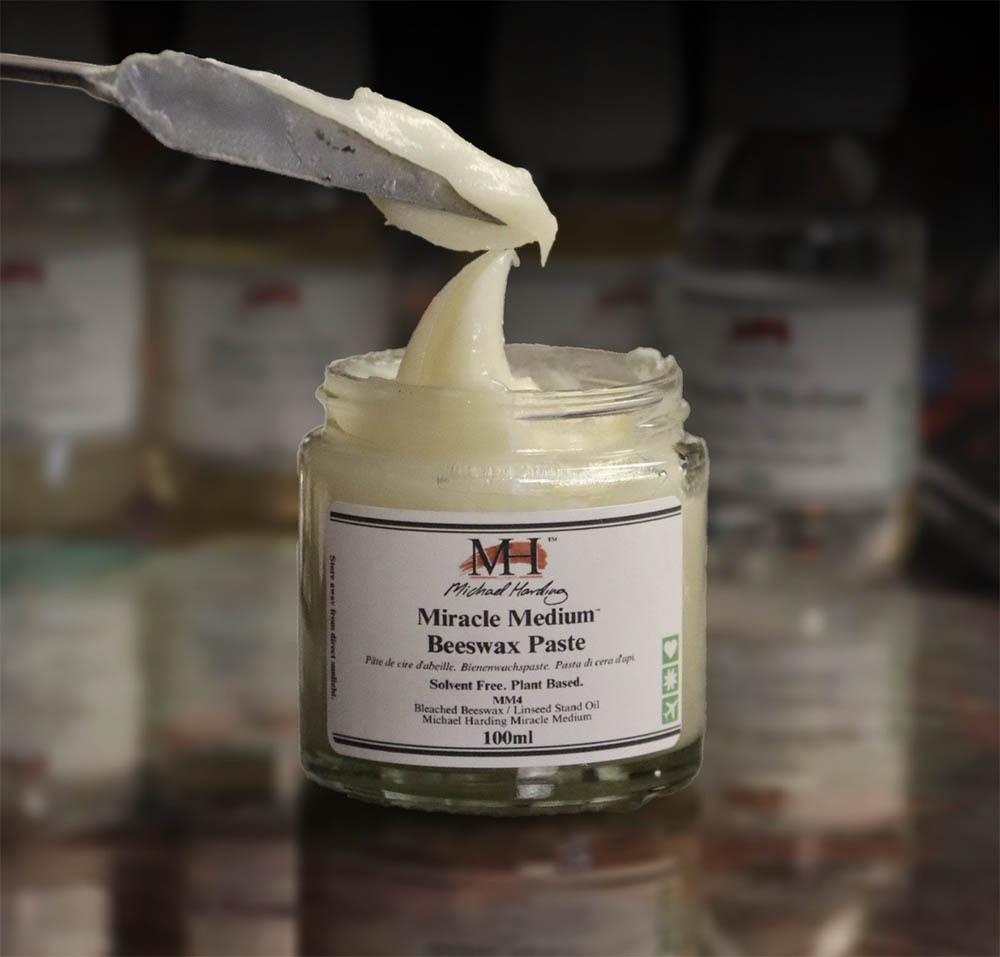
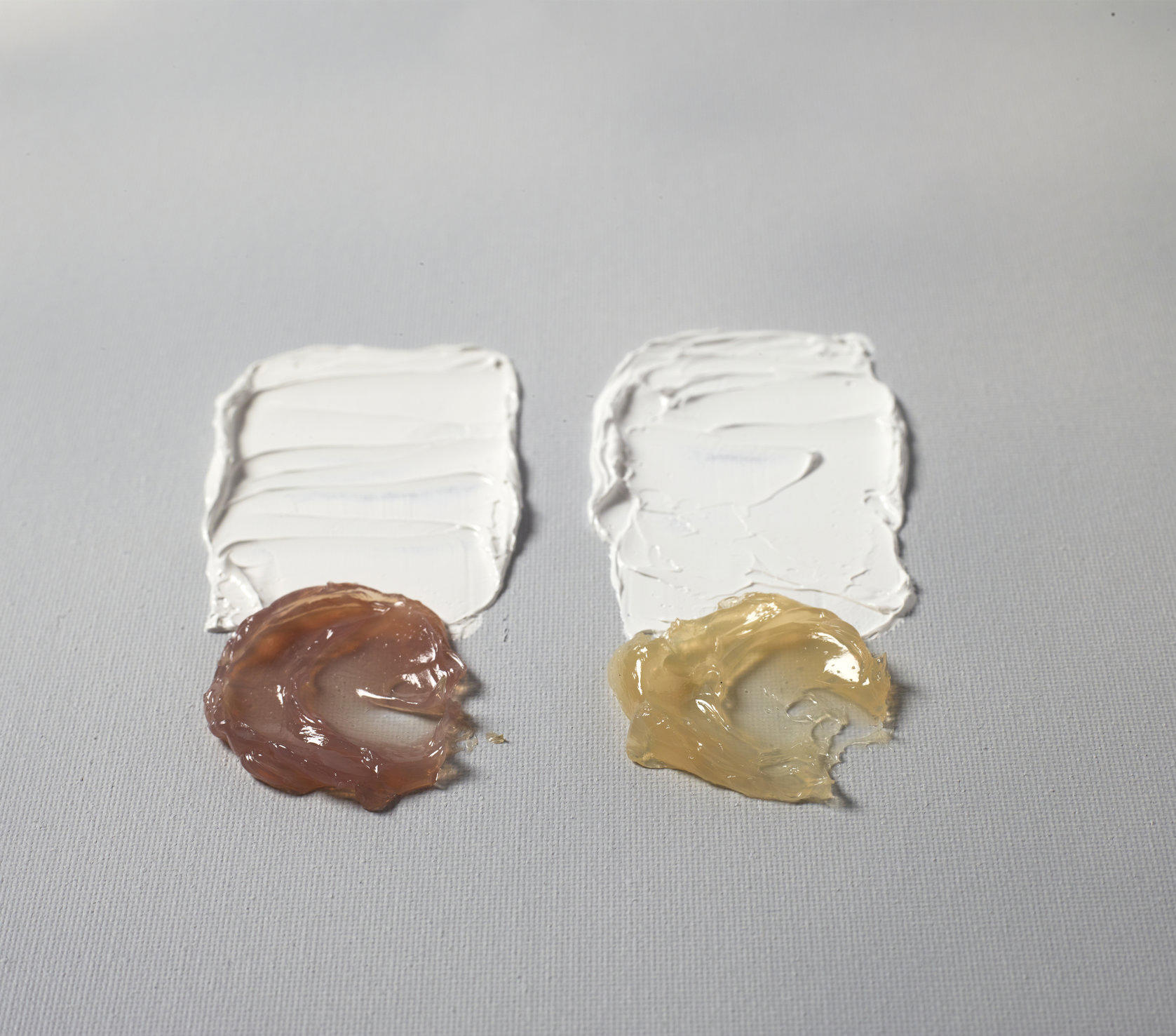
The Winsor & Newton Liquin Original Medium is one of the best-selling mediums at Cass Art. It speeds up drying time, which we all know can be a bonus, and halving the drying time of your painting. It also brings a silky consistency to your paint, giving the surface a glossy finish. Another advantage is that it doesn’t affect the colours of your paint.
Winsor & Newton Liquin Impasto is ideal if you use a really thick application of paint. So if you work with a luscious, thick impasto (we’re thinking van Gogh’s Starry Sky), but if you can’t wait years for the painting to dry, then this is the medium for you. Once mixed it can hold the texture of the brush marks in the paint, it speeds up the drying time, and also adds a glossy finish.
The most fluid of the Liquin family of products is Liquin Fine Detail which is again quick drying, gloss medium is ideal for fine details, glazing & blending or to produce a smooth surface picture. Speeds drying (touch dry in 1-6 days depending on colour & film thickness). Resists yellowing.
A safer, more efficient alternative to turpentine and white spirit. Non-flammable with a light citrus scent, this solvent cleans brushes thoroughly and dilutes oil paint without the harsh fumes. It’s less damaging to the environment, free from harmful aromatic VOCs, and ideal for use in shared studios, schools, and colleges.
- Cleans brushes and studio tools
- Dilutes oil paint for greater flow and transparency
- Non-flammable, safer to use
- Pleasant citrus aroma
- Suitable for artists with sensitivities to traditional thinners
- Also works to blend oil-based coloured pencils and pastels on paper.
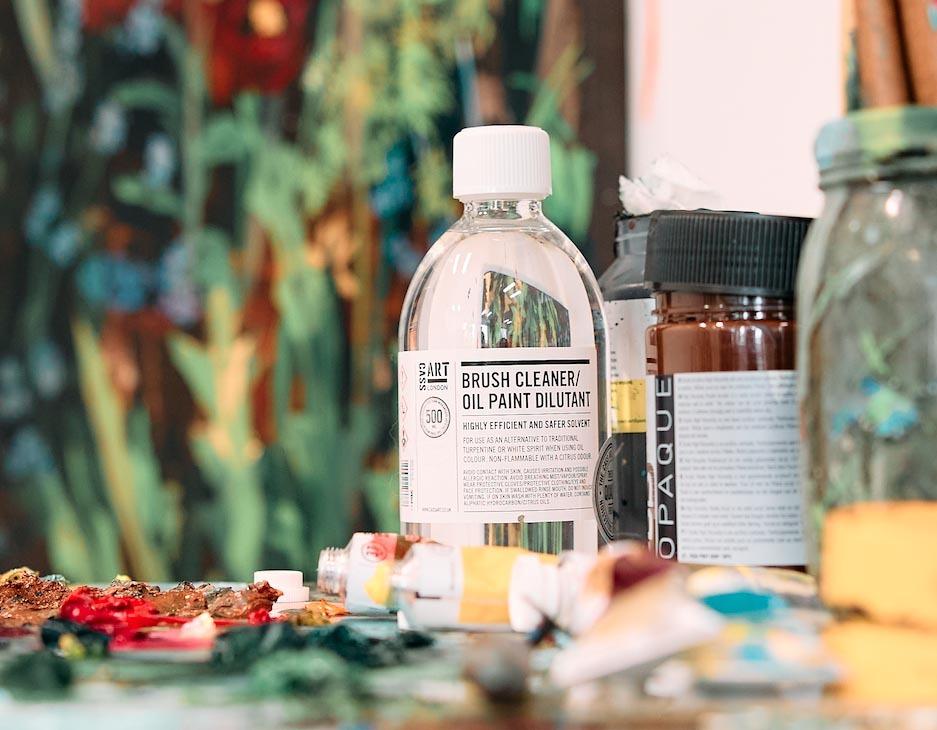
Thanks to acrylic being extremely versatile in its application, you can either speed the drying time up if you need to create a project in a hurry, or you can slow it down to allow you to experiment further with the look and feel of your art piece, such as showing brushstrokes up clearly on the canvas for that traditional feel.
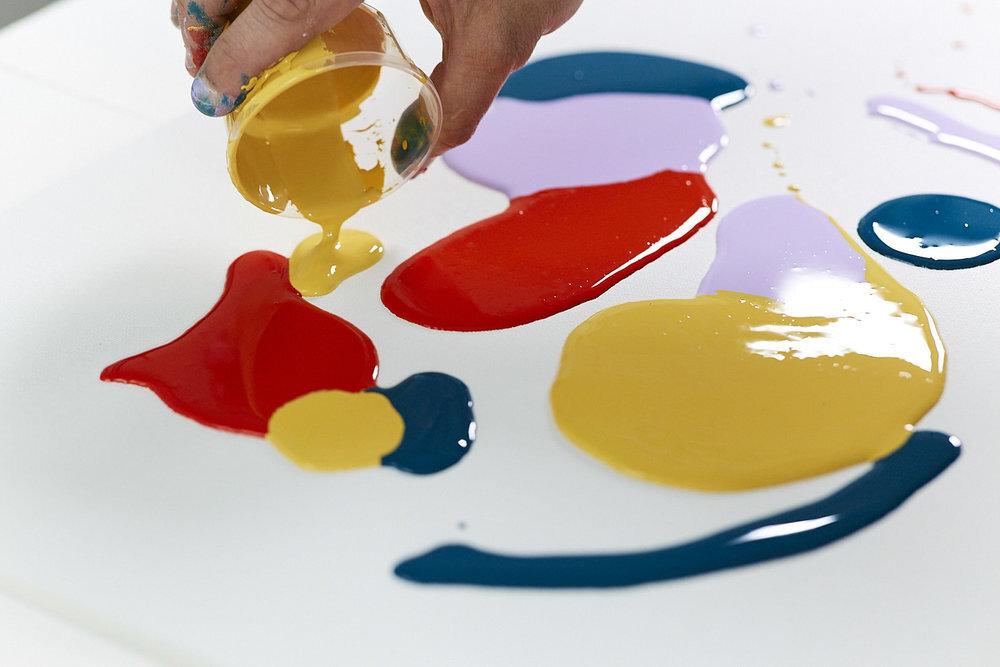
The foundation mediums. Gloss medium gives colour intensity and transparency, drying to a luminous surface that enriches pigment depth. Matte medium softens the finish, creating a flat, velvety look that reduces glare. Both extend paint and unify the surface sheen of a finished piece.
For artists who want body and relief, these are essential. Heavy gels turn fluid acrylic into a sculptural material that holds knife marks and peaks. Once dry, they remain flexible, so thick passages won’t crack. Modelling paste is denser and more opaque, drying to a plaster-like surface that can be carved or sanded before painting over.
Pouring Medium dries to a high gloss, wet-look finish; resulting in a smooth surface, with no crazing, cracking or bubbles. It can be used to maintain paint adhesion, durability and archival quality while retaining and extending colour opacity without affecting the stability of the acrylic paint; as well as lowering the viscosity of heavier body paints by giving an increased flow. It reduces crazing and dries to a clear, glossy flexible film. When dry it is permanent, non-yellowing and water resistant. Liquitex Professional Pouring Medium is a favourite amongst acrylic artists
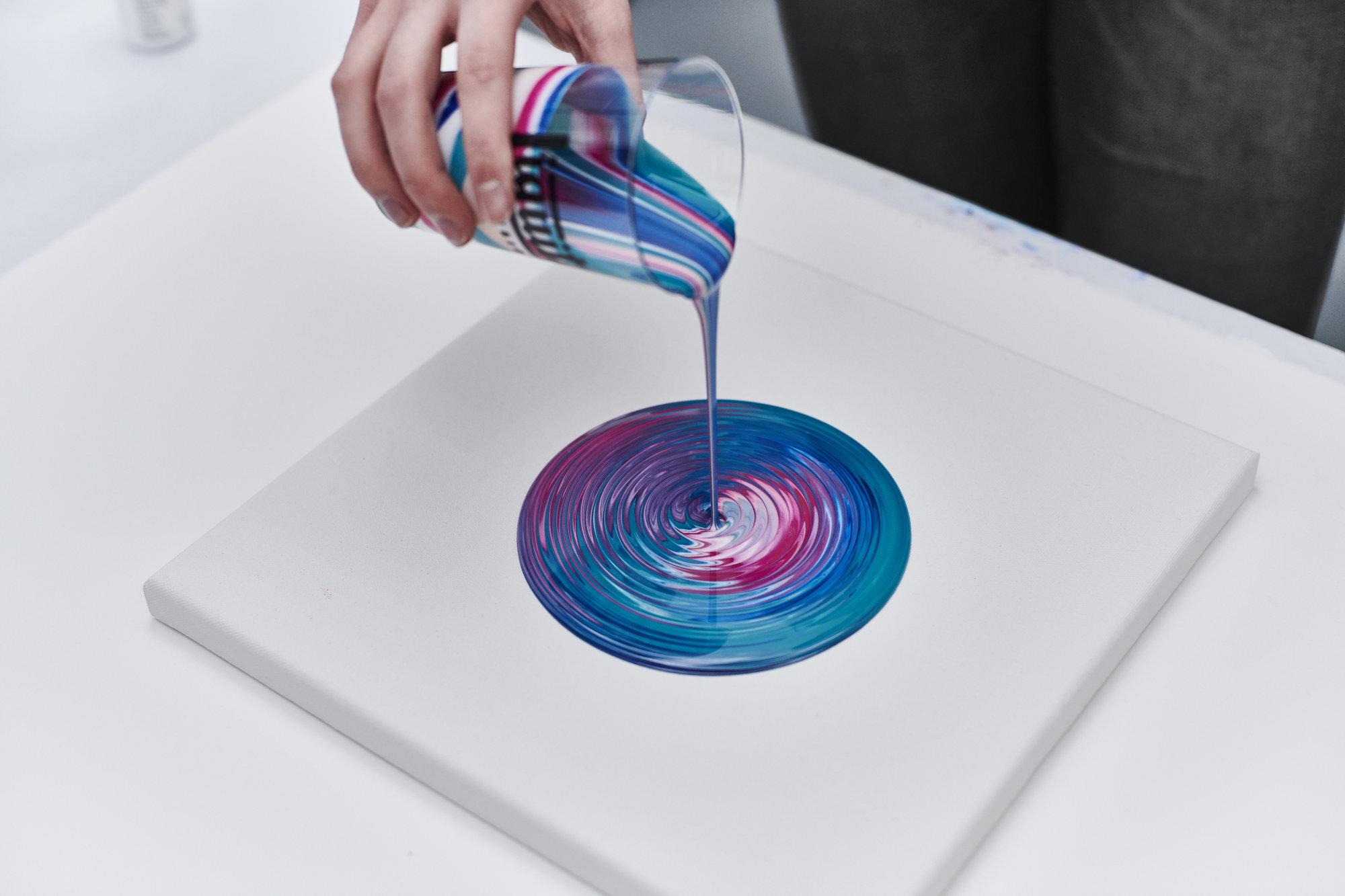
How to use:
For best pours, start with with a tablespoon of Soft Body color to a cup of Pouring Medium (around 5% color to 95% medium) and adapt to suit your technique
To use with Acrylic Ink or Heavy Body Acrylic, adjust ratio to get your desired consistency, stir gently to avoid creating foam - if bubbles appear, leave it to sit while the bubbles rise and disappear. Use as a regular fluid medium extender - mix as much as you like into acrylic color to create the volume and viscosity you want. Crazing and cracking can occur when the flow heights are very uneven so ensure your poured surface is level when drying
How not to use:
Do not use with any non-acrylic media and do not shake or vigorously over-stir as this can impact the smooth appearance when dry Irridescent finish.

Acrylic’s texture mediums open up endless experimentation. Sand gels dry to a gritty surface, glass bead gels sparkle under colour, and fibre pastes give a paper-like ground to work over. These are especially loved in mixed-media practice where surface and depth matter as much as colour.
Glass Bead Gel creates a strongshimmer on acrylic paint. Made with genuine glass beads, its unique visual effect – like that of condensation on cold glass / frosting - is best seen in thin films that allow the mono-layer of glass beads to be illuminated on a light coloured ground. Golden Glass Bead Gel is particularly effective with light colours.
Golden Pumice Gels are used to create gritty, absorbent, and textured surfaces. They dry hard with a greyish colour from the ground volcanic rock they contain. While generally opaque, these gels contain only clear acrylic gel and ground pumice. Fine Pumice gel is an excellent ground for charcoal, graphite and pastel, all Pumice Gels have an absorbent quality that works well under or blended with Golden Acrylic Colours. They are available in three different textures - Fine, Coarse and Extra-Coarse.
Golden Crackle Paste is a thick and opaque medium that produces deep cracks as it dries. Mix it with acrylic colours prior to application or after, or combine with other Golden gels to seal the Golden Crackle Paste before painting over it. It’s easy to use and highly flexible, the depth of cracks increasing the more you apply and according to the environment in which drying takes place.
Watercolour might look simple – pigment, water, paper – but the reality is far more nuanced. Mediums offer subtle ways to guide how colour moves, settles and shines. They can improve flow, enhance brilliance, or even alter surface texture, all while preserving watercolour’s trademark transparency and delicacy.
Whether you’re refining fine details or experimenting with loose, expressive washes, mediums give you more say in how your paint behaves.
Ox Gall is a traditional wetting agent that improves the flow of colour across the paper. It breaks surface tension, allowing washes to spread evenly and pigments to settle naturally without harsh edges. Colours appear richer and more luminous, while still retaining watercolour’s trademark transparency. Use sparingly to bring new life to stubborn paints or to achieve those seamless, fluid transitions that define confident brushwork.
Gum Arabic adds gloss and depth, helping pigments stay bright once dry. It also strengthens the paint film, reducing flaking and improving adhesion in layered work — ideal for artists who build up transparent glazes or fine linear detail.
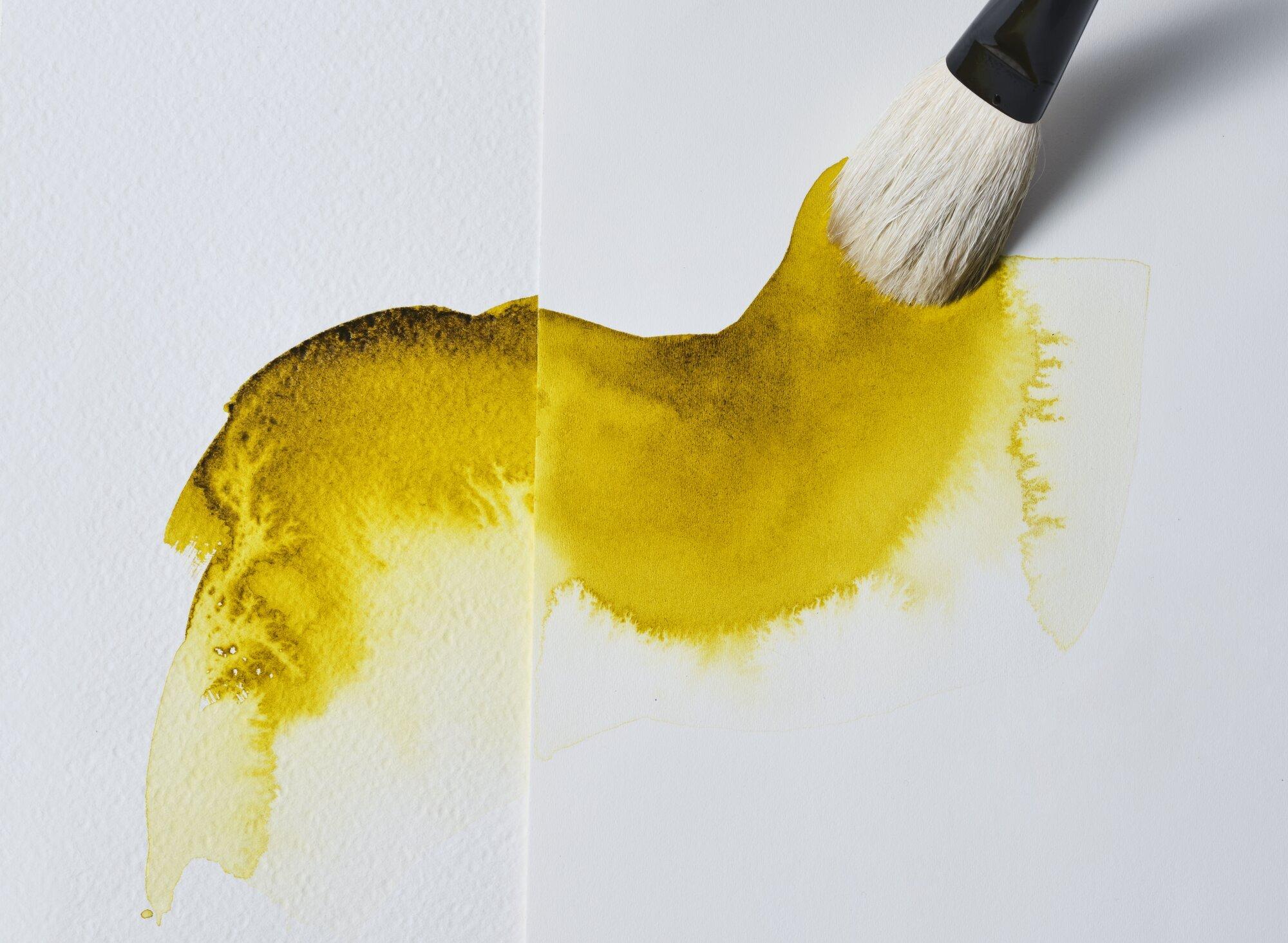
Masking fluid is a lifesaver for watercolour artists seeking to preserve the white of their paper or lighter washes for highlights and details. It's a liquid concoction, typically made from latex, that acts as a temporary barrier on your watercolour paper.

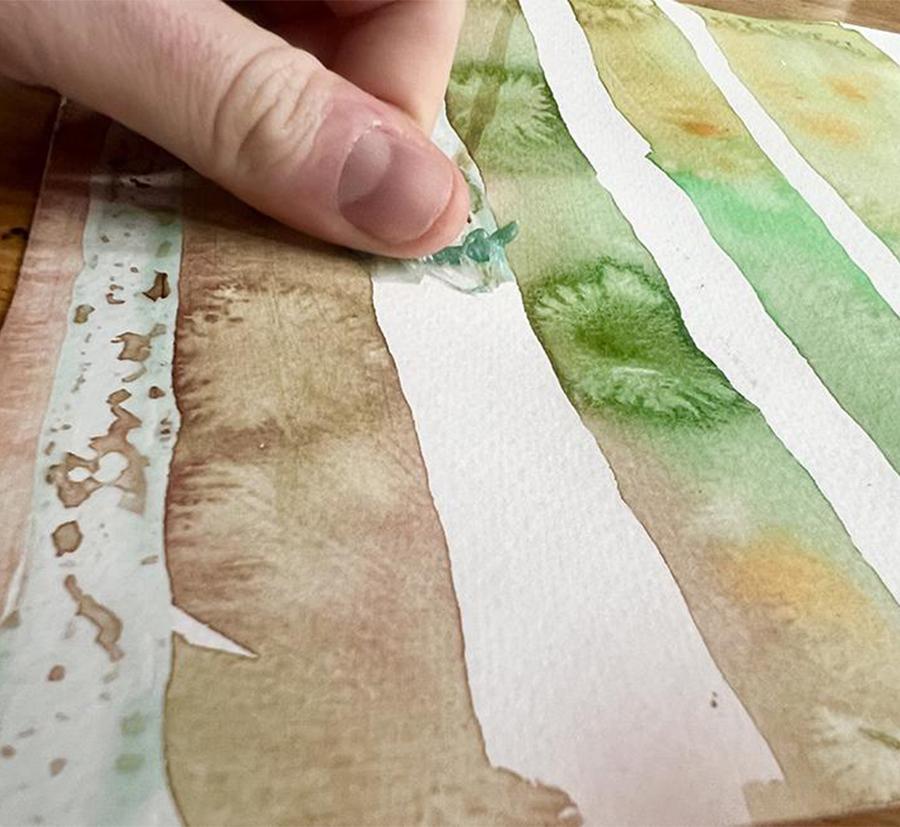
Masking fluid is a lifesaver for watercolour artists seeking to preserve the white of their paper or lighter washes for highlights and details. It's a liquid concoction, typically made from latex, that acts as a temporary barrier on your watercolour paper. Read our blog on a Guide to using Masking Fluid for helpful tips and tricks
For artists who love texture, Granulation Medium accentuates the natural separation of pigment particles as they dry. It exaggerates the mottled, organic effects seen in certain colours — particularly blues, greys and earth tones — giving depth and character to skies, rocks, or water. It’s a way to let chance and material do part of the work, producing beautifully unpredictable surfaces.
